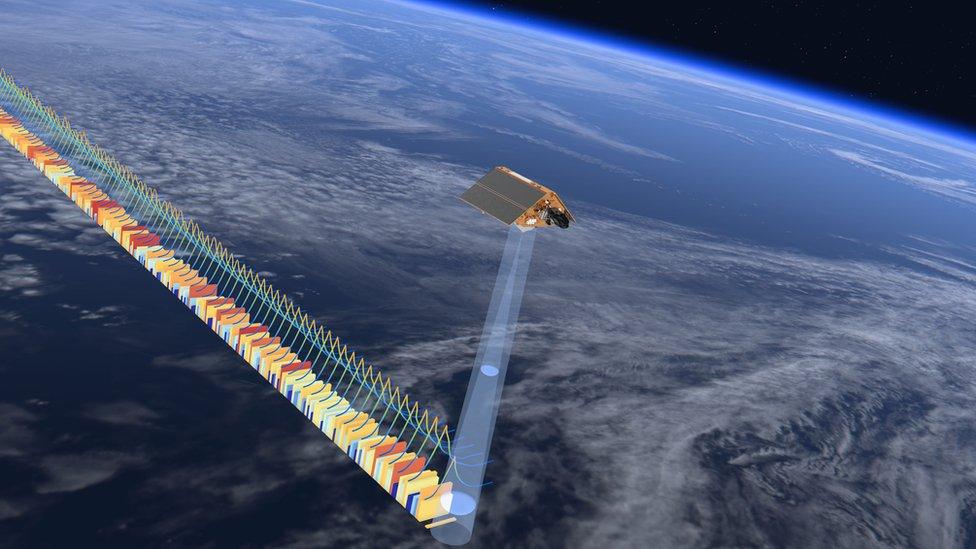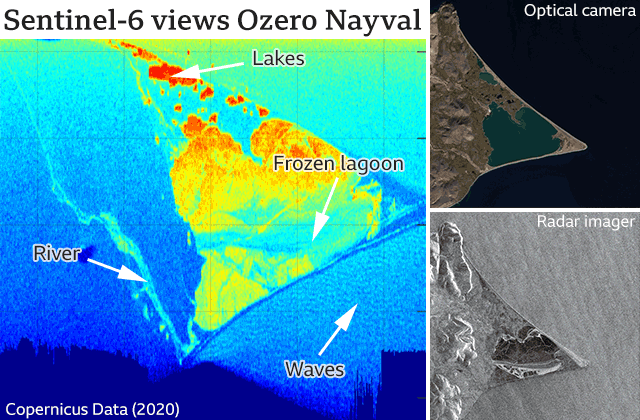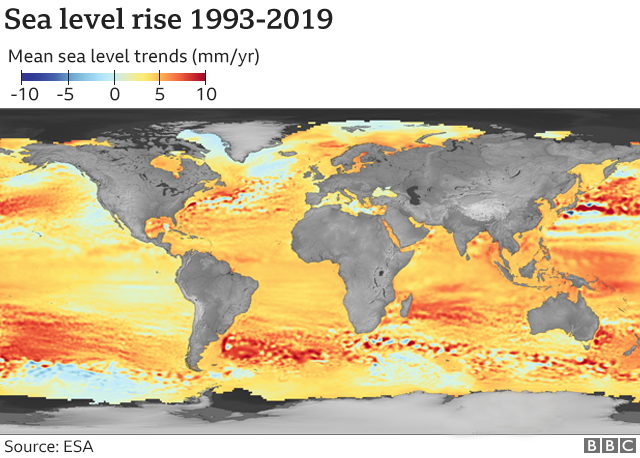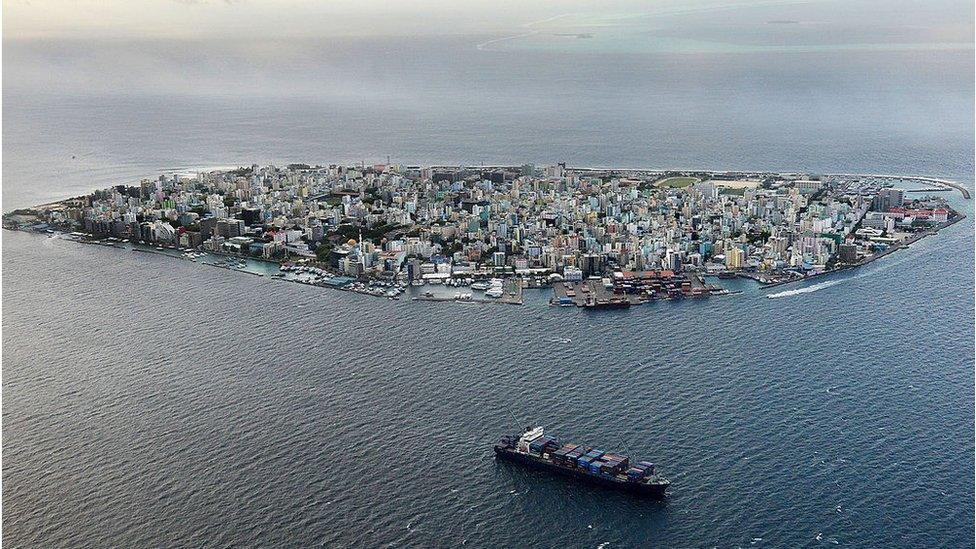'Dog kennel' satellite returns first ocean observations
- Published

Artwork: Sentinel-6 carries an altimeter to measure the elevation of water surfaces
The new satellite that will become the primary orbital tool for tracking sea-level rise is in excellent shape.
Sentinel-6 "Michael Freilich" was only launched three weeks ago, but already it is mapping ocean features in exquisite detail.
The dog kennel-shaped spacecraft is a joint endeavour between Europe and the US.
It is the latest iteration in a series of missions that have been measuring sea-surface height going back to 1992.
These earlier satellites have shown unequivocally that the oceans globally are rising at a rate in excess of 3mm per year over the 28-year period, with an acceleration apparent in the last decade.

The new Sentinel-6 data was processed to show a more recognisable type of picture (main box). Here it is compared with familiar images obtained by an optical camera from the Sentinel-2 spacecraft and a radar imager from Sentinel-1. It proves the Sentinel-6 instrument will get very good data on small-scale features, even in coastal waters and over inland water bodies

Space agency officials released sample data on Thursday to illustrate the progress in commissioning Sentinel-6 and its main observation payload, an altimeter.
This is an instrument that fires microwave pulses down to Earth and then counts the time it takes to receive the return signal, converting this into an elevation.
Normally, the data is presented as a "waveform", in which the power of the return signal traces sea surface height and roughness (wave height and wind speed).
But for Thursday's mission update, sample data was given special processing to produce an image that would be more recognisable to the lay observer.
Artwork: The unusual shape, with fixed solar panels, keeps the satellite very stable
The target was a coastal lagoon in northeast Russia - a location known as Ozero Nayval.
Sentinel-6's altimeter was able to pick out information about the surface in this area that versions of the instrument flown on the earlier satellites could never have detected.
These details included partial ice cover in the lagoon, small ponds, a nearby river and wave action immediately offshore.
"This is the best altimeter in space - no question," Dr Craig Donlon, the Sentinel-6 mission scientist at the European Space Agency, told BBC News.
"This image is a super demonstration of the fidelity of the radar altimeter and the ultra low noise of the instrument's digital back end. It's very beautiful, very coherent. In a noisy altimeter, you wouldn't see hardly anything."

The rise in sea level is not uniform. In some regions of the globe, the yearly change has been much more rapid
One of the great promises of Sentinel-6 and its new high-resolution capabilities is that it will show what is happening to sea levels right up against shorelines.
The behaviour next to the land can be different from what's occurring further out to sea because of the influence of local currents, river outflows and the shape of the seafloor. But, of course, it's right on the coast that so many people live.
Fifteen out of the 23 global mega-cities are located at the coast. Indeed, coastal zones are developing and urbanising up to two times faster than inland locations.
"Sentinel-6 can really help us to detect early on which sea-level rise scenario we are heading for," said Dr Jochen Hinkel, a senior researcher at the Global Climate Forum and a member of the UN's Intergovernmental Panel on Climate Change.
"This can help us to better time and also more efficiently design coastal infrastructure. This will save us billions of US dollars per year."
Sentinel-6 is currently being moved into a position 1,336km above the Earth's surface where it can track 30 seconds behind its predecessor satellite, Jason-3.
Once their altimeters have been cross-calibrated, the ageing Jason-3 platform will be shifted on to a separate path and Sentinel-6 will assume the lead measurement role, a duty it will fulfil until a follow-on Sentinel is launched in five years' time.

Malé in the Maldives: Meeting the challenge of sea-level rise requires precise data